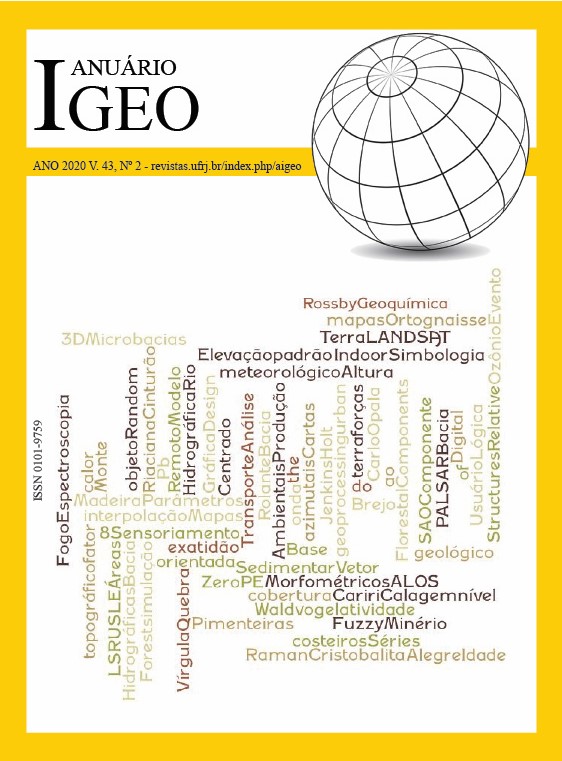Avaliação do Método de Assimilação de Dados En4DVar Implementado no Modelo WRF
DOI:
https://doi.org/10.11137/2020_2_405_414Keywords:
Assimilação, En4DVAR, WRFAbstract
Métodos Híbridos baseados em previsão por conjuntos e cálculo variacional quadri-dimensional (En4DVAR) representam o estado da arte em métodos de assimilação de dados aplicados às ciências atmosféricas. Esta técnica permite a atualização da matriz de covariância de erros de previsão, sem o cálculo explícito destes erros, conforme a derivação teórica do filtro de Kalman ou suas aplicações operacionais; e também evita o calculo do trabalhoso e custoso modelo adjunto e tangente linear, como no 4DVAR. Neste trabalho, avalia-se o método En4DVAR implementado no Weather Research and Forecasting Model (WRF), quanto a sua precisão nas primeiras 48 horas de previsão na região sul do Brasil no período de 09/04/2018 à 15/05/2018 dias. Utiliza-se como verdade terrestre dados das estações do Instituto Nacional de Meteorologia (INMET). Os resultados obtidos pelas métricas estatísticas Viés e Raiz do Erro Quadrático Médio, mostram que a o WRF-En4DVAR segue as mesmas tendências do WRF, com a particularidade de reduzir significativamente os erros. Entretanto, as variáveis Pressão à Superfície e Temperatura à 2m, apresentam melhor previsibilidade, tanto com como sem assimilação, ao passo que Umidade Relativa e Vento à 10 apresentam menor precisão tanto com o WRF como com o WRF-En4DVAR.
Downloads
References
Anderson, J. 2001. An Ensemble Adjustment Filter for Data Assimilation. Monthly Weather Review,129: 2884-2903.
Bishop, C.; Etherton, B. & Majumdar, S. 2001. Adaptive Sampling with the Ensemble Transform Kalman Filter part
I: The Theoretical Aspects. Monthly Weather Review,
: 420-436.
Buehner, M. 2005: Ensemble-derived Stationary and Flow-de-pendent Background Error Covariance: Evolution in
a Quasi-operation NWP Setting. Quarterly Journal
Royal of the Meteorological Society, 131: 1013-1043.
Burgers, G.; Leeuwen, P.J.V. & Evensen, G. 1998. Analysis
Scheme in the Ensemble Kalman Filter. Monthly Weather Review, 126: 1719-1724.
Courtier, P. & Talagrand, O. 1998. Variational Assimilation of
Meteorological Observation with the Adjoint Vorticity
Equation. Part II: Numerical Results. Quarterly Journal Royal of the Meteorological Society, 113: 1329-
Evensen, G. 1994. Sequential Data Assimilation with a Nonlinear Quasi-geostrophic Model using Monte Carlo Methods to Forecast Errors Statistics. Journal of Geophysical Research, 99(5): 143-162.
Huang, X.-Y&Yang, X.1996. Variational Data Assimilation
with Lorenz Model. Hirlam Technical Report, 26,
S-601 76 SMHI Norrköping, Sweden.
Kalnay, E. 2003. Atmospheric Modeling, Data Assimilation
and Predictability. Cambridge. Cambridge University
Press. 369 p.
Li, Z. & Navon, I.M. 2001: Optimality of Variational Data Assimilation and its Relationship with the Kalman Filter
and Smoother. Quarterly Journal Royal of the Meteorological Society, 127: 661-683.
Liu, C.; Xiao, Q. & Wang, B. 2008. An Ensemble-Based Four-Dimensional Variational Data Assimilation Scheme.
Part I:Technical Formulation and Preliminary Test.
Monthly Weather Review, 136: 3363-3373.
Liu, C.; Xiao, Q. & Wang, B. 2009. An Ensemble-Based Four-Dimensional Variational Data Assimilation Scheme.
Part II: Observing System Simulation Experiments
with Advanced Research WRF (ARW), Monthly Weather Review, 137: 1687-1704.
Ott, E.; Hunt, B.; Szunyogh, I.; Zimin, A.; Kostelich, E.; Corrazza, M.; Kalnay, E.; Patil, D.& Yorke, J. 2004. A Local
Ensemble Kalman Filter for Atmospheric Data Assimilation. Tellus, 56A: 415-428.
Parrish, D. & Derber, J. 1992. The National Meteorological
Center’s Spectral Statistical-Interpolation Analysis
System, Monthly Weather Review.,1120: 1747-1763.
Rabier, F. & Courtier, P. 1992. Four-Dimensional Assimilation
in the Presence of Baroclinic Instability, Quarterly
Journal Royal of the Meteorological Society,118: 649-672.
Downloads
Published
How to Cite
Issue
Section
License
This journal is licensed under a Creative Commons — Attribution 4.0 International — CC BY 4.0, which permits use, distribution and reproduction in any medium, provided the original work is properly cited.















